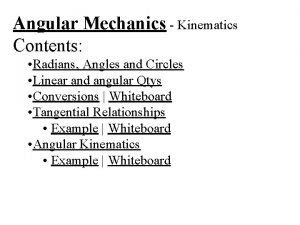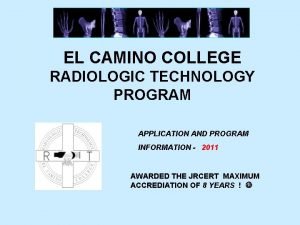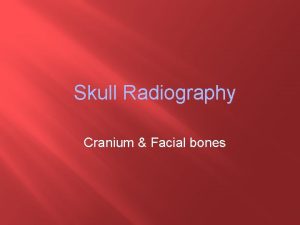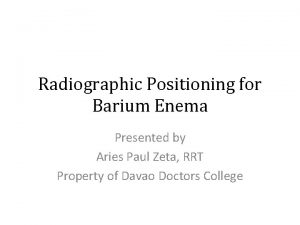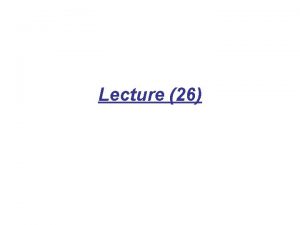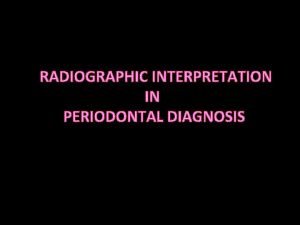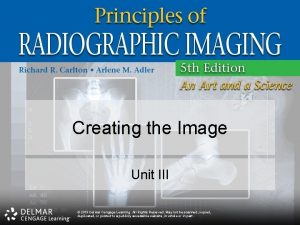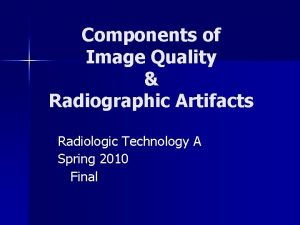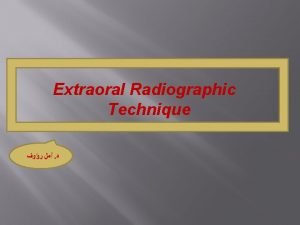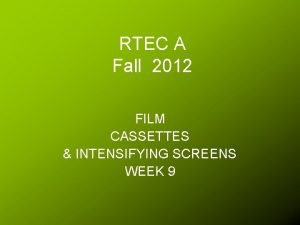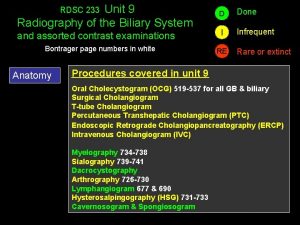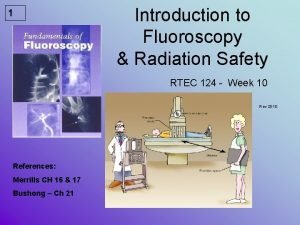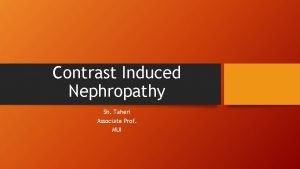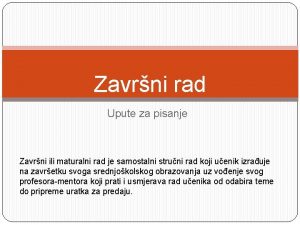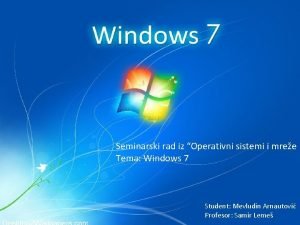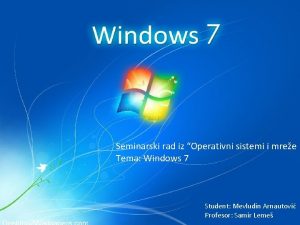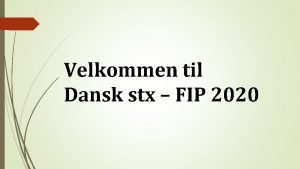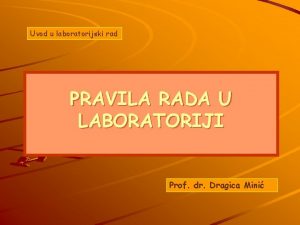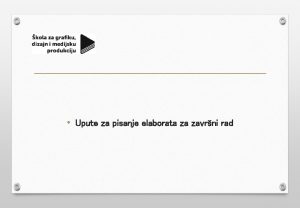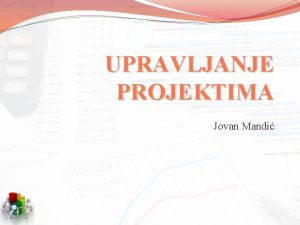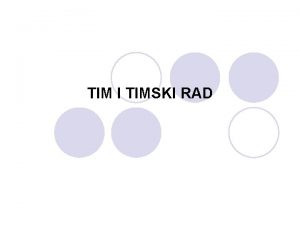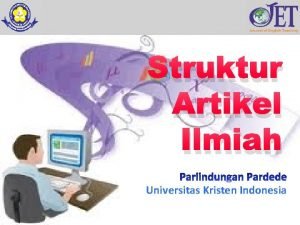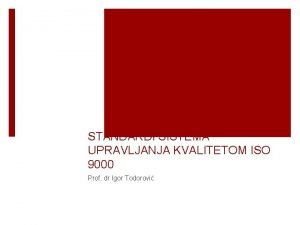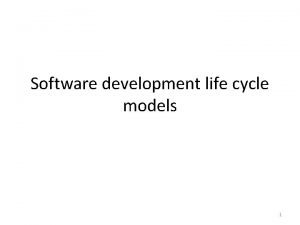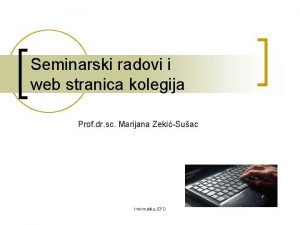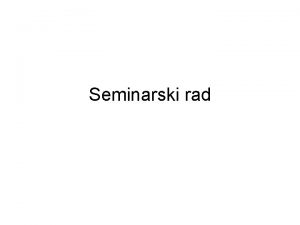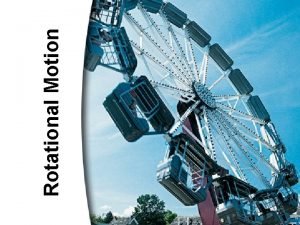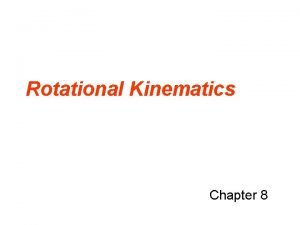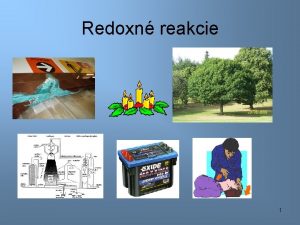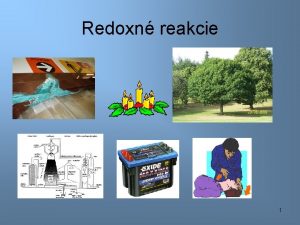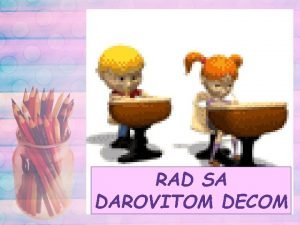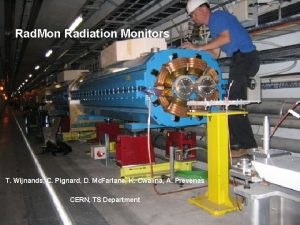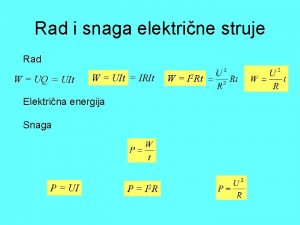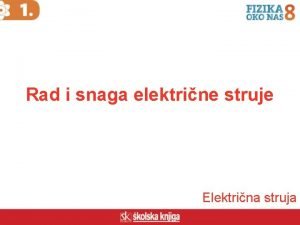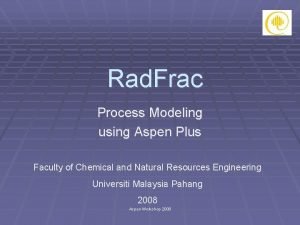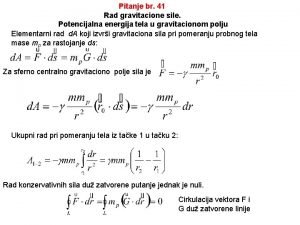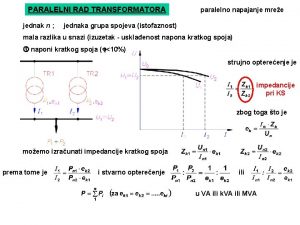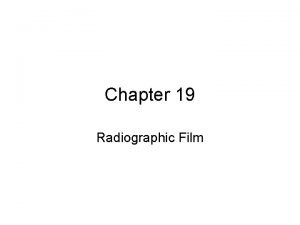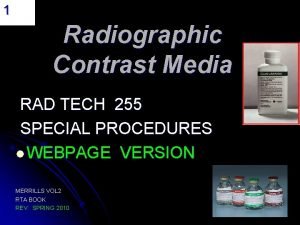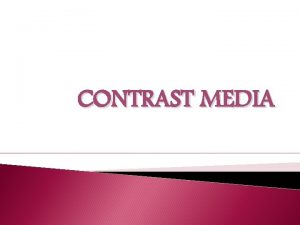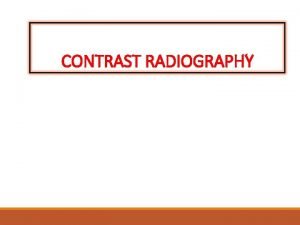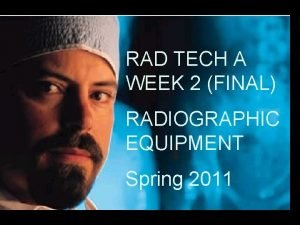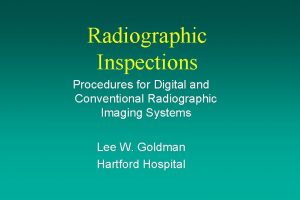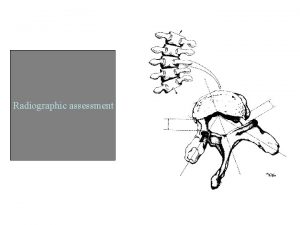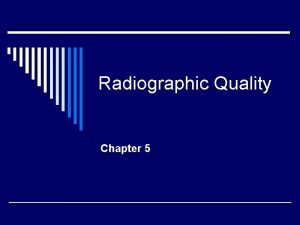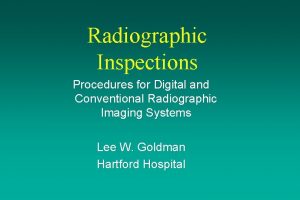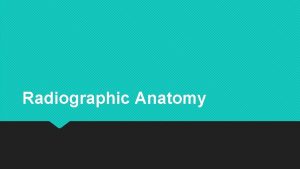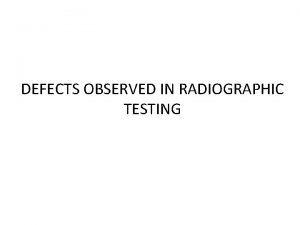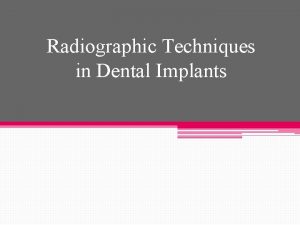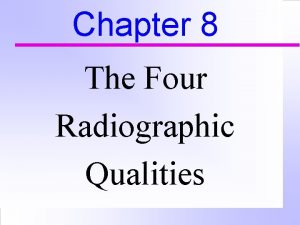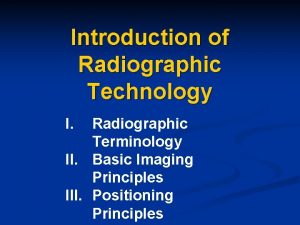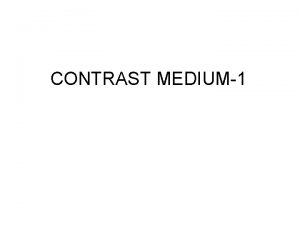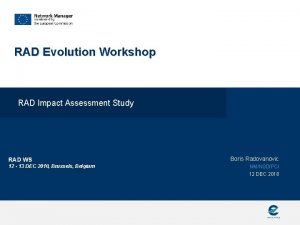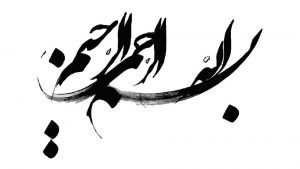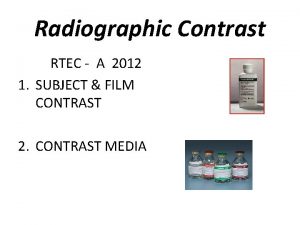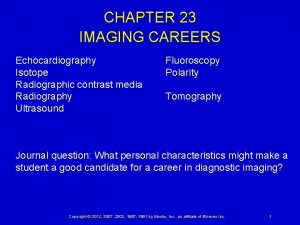Contrast media 1 Radiographic Contrast Media RAD TECH



















































- Slides: 51

Contrast media 1

Radiographic Contrast Media RAD TECH 255 SPECIAL PROCEDURES MERRILLS VOL 2

Subject Contrast • Range of differences in the intensity of the xray beam, after it has been attenuated by the subject (patient).

Low Subject Contrast What can be done to attain medical information • see the difference between muscle, organs or vessels Define and outline – organ structure and function

Contrast media • Defines subtle differences in subject contrast • Increases atomic number of area injected • Results in a SHORTER scale of subject contrast

Purpose of Contrast Media • To enhance subject contrast or render high subject contrast in a tissue that normally has low subject contrast.

Atomic Number • Fat = 6. 46 • Water = 7. 51 • Muscle = 7. 64 • Bone = 12. 31

Radiographic Contrast : Influenced by… • Radiation Quality (KVP) • Film Contrast • Radiographic object (Patient)

KVP • TYPE OF CONTRAST USED DETERMINES KVP RANGE BARIUM IODINES 90 – 120 k. Vp 70 – 80 k. Vp (Ionic / Nonionic Water or Oil)

INJECTABLE CONTRAST MEDIA for RT 255 procedures INVASIVE PROCEDURES The “o-grams”

ALWAYS TAKE A “SCOUT” BEFORE CONTRAST INJECTION √ PATHOLOGY √ TECHNIQUE √ PREP & PRIOR CONTRAST √ POSITIONING

SPECIAL “o-grams” • • Venogram Arthrogram Sialogram Myelogram Arteriogram Angiogram Galactogram Hystersalpingogram……. . etc



CONTRAST INJECTION

DOUBLE CONTRAST WITH IODINE HIP Arthorgram

To check fertility


LYMPHANGIOGRAM

Galactography - Breast Duct

Cerebral Angiogram


SPECIAL PROCEDURES ARE INVASIVE ALWAYS GET PATIENT’S HISTORY AND CONSENT BEFORE BEGINNING OR GIVING ANY CONTRAST MEDIA

CONSENTS • • SIGNED AND WITNESSED AFTER PROCEDURE HAS BEEN EXPLAINED CHECK DEPARTMENT PROTOCOL WHO’S RESPONSIBLE ? ? ?

CONSENTS • ASSAULT verbal threat of harm • BATTERY Unlawful touching - unauthorized treatment “X-RAY” TAKEN ON WRONG PATIENT • FALSE IMPRISONMENT Restraints require permission from patient or authorized person

BLOOD WORK LAB TESTS to check function of kidneys prior to injection of contrast • WATCH THE UPPER LIMITS • BUN = BLOOD UREA NITROGEN • Merrills pg 214 range is 8 to 25 pg 242 range is 10 - 20 always check with RAD when level above 20 • CREATININE levels range: range • pg 214 (0. 6 - 1. 5) pg 242 (0. 05 - 1. 2) always check with RAD when level above 1. 2 • Indicates function of kidneys • Diseases / dehydration / kidney failure

EGFR (new test) • • Estimated Glomerular Filtration Rate • More advanced test for • CREATININE levels

Review of Contrast Agents Types of Contrast Routes of Adminstration Chemical Components

Contrast Media changes the density of the organs Therefore changing the Subject contrast will change the Radiographic contrast and film contrast May need to INCREASE TECHNIQUE FROM SCOUT IMAGE

Contrast Media (review) • Negative contrast • (AIR OR CO 2) • Positive contrast • (all others) • Radiolucent • Radiopaque • Low atomic # material • High atomic # material • Black on film • White on film

Types of Contrast Media • • Radiolucentnegative contrast agent x-rays easily penetrate areas- appear dark on films Negative Contrast Media • Air and gas • complications • emboli-air pockets in vessels • lack of oxygen • • Radiopaquepositive contrast agentabsorbs x-rays appears light Positive Contrast Agents • BARIUM • IODINES Both + & - can be used in same study

2 BASIC TYPES OF CONTRAST material • BARUIM Z# 56 • • • NON WATER SOLUABLE • • • GI TRACT ONLY • INGESTED OR RECTALLY • • KVP 90 – 120* • • • IODINE Z# 53 WATER SOLUABLE POWDER LIQUID INTRAVENOUS OR Intrathecal GI TRACT Also OIL based KVP BELOW 90*

Methods of Administration of Contrast Material • INGESTED – (ORAL) • RETROGRADE – AGAINST NORMAL FLOW • INTRATHECAL – Spinal canal • PARENTERAL (IV, Intrathecal) – Injecting into bloodstream – (anything other than oral)

Contrast media for SPECIAL PROCEDURES Diagnostic agents that are injected into • Circulatory System, Joint Spaces, Ducts • Body orifices/organs: uterus, breast, salivary & lymph glands

BARIUM – a review BARUIM SULFATE Not used in Special Procedures

Barium Sulfate • • • High atomic number Not soluble in water Used to coat the lining of organs Supplied in different thicknesses Used – Esophogram, UGI, Small Bowel, Lower GI or BE

Ba ADVERSE REACTIONS BARIUM INERT SUSPENSION MAY CAUSE ALLERGY OCG TABLETS (IODINE) ALLERGY AFTER EXAM – MAY SOLIDIFY DIFFICULT TO EVACUATE • INCREASE FLUIDS, MILD LAXATIVE • EXTRAVASATION OF CONTRAST INTO PERITONEUM • •

Extravasation of BA in abd

Ingested CONTRAST Gastrografin or Hypaque • High atomic # – Close to iodine • Water soluble • Similar usage as Barium

GASTROGRAFIN Adverse Reactions • Water soluble, safe in the abdominal cavity – Safe to use if perforation is suspected • Very harmful to the lung tissue – Do not use if aspiration is possible

Gastro – Pathology present • Bowel • Obstruction • Note contrast • Seen in kidneys as well

IODINE IONIC OR NON IONIC WATER OR OIL BASE

IODINATED CONTRAST iodine z # 53 • WATER BASED • • • INJECTED VESSELLS/DUCTS INGESTED Organ function/flow OPEN WOUNDS • • • OIL BASED INJECTED NEVER VESSELLS ONLY DUCTS NOT INGESTED OPEN WOUNDS

INJECTION OF IODINE into Vessels • ALWAYS A WATER BASED IODINATED COMPOUND • IONIC VS • NON IONIC • CONTRAST • BOLUS INJECTION • INFUSION DRIP • 50 -70 % CONCENTRATE

IODINE WATER BASED CONTRAST • IONIC • LESS $$$ • NON IONIC • MORE $$$ • MORE REACTIONS • LESS REACTIONS

CONTRAST MEDIA IODINE is either: IONIC or NON-IONIC • Osmolarity • # Of Particles (Cations + And Anions -) – In Solution Per Kilogram Of Water • High Osmolarity – =more Cations And Anions • Can Upset Homeostasis • Nonionic Have No Charged Particles

Contrast Agents IONIC • High Osmolality (Higher risk of complications) NON-IONIC • Low Osmolality (Lower risk of complications) • Gadodiamide (Omniscan) – Iodixanol (Visipaque) – Diatrizoate sodium – Iopamidol (Isovue) (Hypaque) – Iopromide (Ultravist) – Iothalamate – Ioversol (Optiray) meglumine (Conray)

• Less money • More reactions • More money • Less reactions

OIL – BASED IODINE CONTAST Instilled in ORGAN

Oil Based Iodine • Fatty Acids • Insoluble in water – White on the radiograph = Radiopaque • Uses – – – Broncography (lungs) Tear ducts Salivary glands Lymphatic system Hysterrosalpingogram Galactography (breast ducts) • FAT EMBOLUS IF IT GETS INTO • BLOOD VESSEL

Newer Contrast Agents Balance Safety and Visualization
 Rpm to rev/min
Rpm to rev/min El camino college radiology program
El camino college radiology program Radiographic baseline skull
Radiographic baseline skull Positioning for enema
Positioning for enema Grid conversion formula
Grid conversion formula Darkroom equipment in radiography
Darkroom equipment in radiography Labial mounting method
Labial mounting method Interpupillary line
Interpupillary line Sid and oid in radiography
Sid and oid in radiography Alveolar bone
Alveolar bone Radiographic film
Radiographic film Radiographic artifacts
Radiographic artifacts Reverse towne projection uses
Reverse towne projection uses Radiographic films
Radiographic films Geometric penumbra formula
Geometric penumbra formula Transhepatic cholangiography
Transhepatic cholangiography Low tech and high tech assistive technology
Low tech and high tech assistive technology Find people
Find people Double contrast vs single contrast
Double contrast vs single contrast Classification of contrast media
Classification of contrast media Maturski rad naslovna strana
Maturski rad naslovna strana Operativni sistemi seminarski rad
Operativni sistemi seminarski rad Operativni sistemi seminarski rad
Operativni sistemi seminarski rad Paradisæblerne analyse
Paradisæblerne analyse Uvod u laboratorijski rad
Uvod u laboratorijski rad Izvor slike u seminarskom radu
Izvor slike u seminarskom radu Izgled završni rad primjer
Izgled završni rad primjer Upravljanje projektima seminarski rad
Upravljanje projektima seminarski rad Timski rad definicija
Timski rad definicija Centar za socijalnu skrb dubrava
Centar za socijalnu skrb dubrava Aimrad format
Aimrad format Iso 9000 standardi
Iso 9000 standardi Disadvantages of spiral model
Disadvantages of spiral model Seminarski rad informatika
Seminarski rad informatika Seminarski rad template
Seminarski rad template Seminarski rad pocetna strana
Seminarski rad pocetna strana Elektronsko poslovanje seminarski rad
Elektronsko poslovanje seminarski rad Deg rad grad
Deg rad grad Rad/s
Rad/s Beketov rad kovov
Beketov rad kovov Becketov rad
Becketov rad Rad studio nedir
Rad studio nedir Rad sa darovitom decom
Rad sa darovitom decom Rad mon
Rad mon Rad i snaga električne struje
Rad i snaga električne struje Rad elektricne struje
Rad elektricne struje Rad frac
Rad frac Nactrc
Nactrc Rad model in software engineering
Rad model in software engineering Gravitaciona potencijalna energija
Gravitaciona potencijalna energija Tahapan rad
Tahapan rad Paralelni rad transformatora
Paralelni rad transformatora
